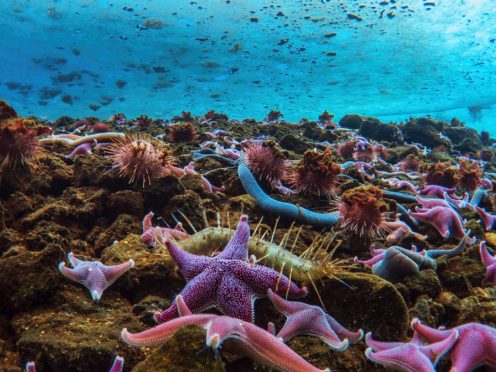The BBC’s new natural history series kicks off with a first episode on the “frozen wilderness” of Antarctica.
Humpback whales, albatross chicks and Weddell seals are all captured on camera in breathtaking scenes.
But the episode also captures the impact of global warming, with glaciers in the remote continent “carving faster than they have done since records began”.
Producer Fredi Devas said: “Even though it’s very remote, the wildlife there is not safe from the pressures of humanity.”
The seven-part series, fronted by Sir David Attenborough, will also turn its lens on North America, South America, Europe, Africa, Asia and Australia.
Here are some images and behind-the-scenes images from the first BBC One episode:

A leopard seal eyes up its prey, a gentoo penguin, in dramatic scenes in the programme.

A brave cameraman films elephant seals preparing for battle over territory on St Andrews Bay, South Georgia.

King penguin chicks interact with each other, sometimes in hilarious ways, while waiting for their parents to return with food.

A Weddell seal pup’s first ocean swim is captured in the Antarctica episode.

Sir David Attenborough lends his “unmistakable voice” to the much-anticipated TV documentary.

Grey-headed albatross chicks attempt to stay on the nests in fierce storms. Their parents cannot identify them unless they are on the nest, even if they are right under their noses.
A specialist cameraman was “able to inch closer to the birds each day to make sure he didn’t disturb the chicks in any way… The birds were so relaxed in his company one of the adults fell asleep on his lens,” filmmakers said.
Seven Worlds, One Planet begins on Sunday October 27 at 6.15pm on BBC One.
